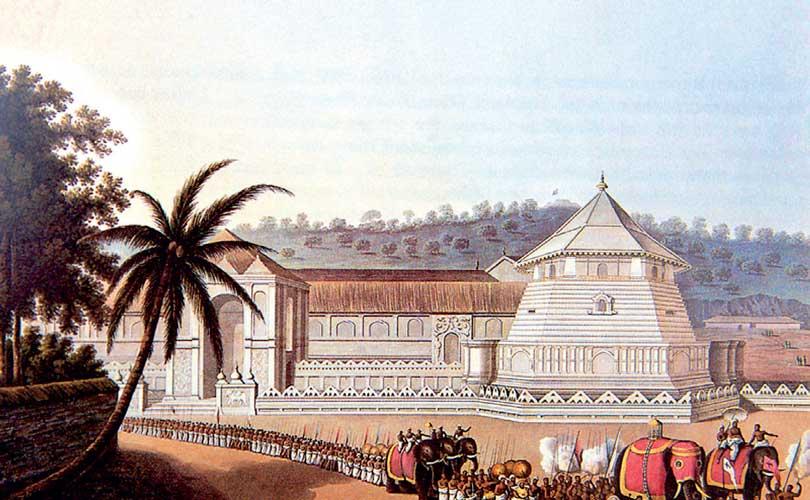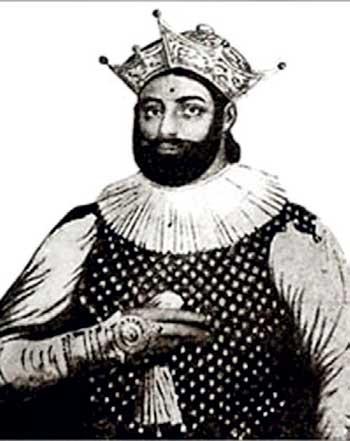Reply To:
Name - Reply Comment

 The study of the history and evolution of the petty bourgeoisie or lower middle class in colonial societies has not been given the attention it deserves. Part of the reason for this may be, as Arno Mayer has noted, the “intricate nature” of the petty bourgeoisie which has made it more colourful, complicated, and even contradictory than the old aristocracy, bourgeoisie, peasantry, and proletariat. While the colonial bourgeoisie and working class figured in some of the most pioneering studies of the second half of the 20th century, the lower middle class of the colonial era thus remained conspicuous by its absence and “absenting” in many, if not most, of those studies.
The study of the history and evolution of the petty bourgeoisie or lower middle class in colonial societies has not been given the attention it deserves. Part of the reason for this may be, as Arno Mayer has noted, the “intricate nature” of the petty bourgeoisie which has made it more colourful, complicated, and even contradictory than the old aristocracy, bourgeoisie, peasantry, and proletariat. While the colonial bourgeoisie and working class figured in some of the most pioneering studies of the second half of the 20th century, the lower middle class of the colonial era thus remained conspicuous by its absence and “absenting” in many, if not most, of those studies.
The petty bourgeoisie, Marx observed in The 18th Brumaire of Louis Napoleon, was both cut off from and connected to the bourgeoisie and the working class. Because of their diversity and size, the lower middle class were unable to enforce their interests. In other words, “[T]hey cannot represent themselves, they must be represented.” Their reliance on representatives linked them to the growth of parliamentary democracy in the West; that linked them to either the bourgeoisie or working class, depending on the mood of the moment: Arno Mayer argued they tended to be hostile to the working class, while Jonathan Wiener argued they had the potential to be, and were, allied with them: in the aftermath of the 1848 revolution in France, for instance, they formed an alliance with the Parisian proletariat against the all powerful bourgeoisie.
In colonial societies the petty bourgeoisie played a largely different historical role. Depending on the nature of class cleavages and social hierarchies in their countries, the lower middle class found themselves at odds with imperial economic and political policies. Put simply, the more servile the bourgeoisie were towards colonial overlords, the more pronounced the opposition of the lower middle class or petty bourgeoisie to those policies was. In that regard, it is imperative to divide this class into an old and a new, or a pre-colonial and a colonial, phase, since the way it asserted its strength was different in each of those phases. This was especially true of Sri Lanka.
 At the time of the Kotte kings, K. M. de Silva has contended, “the principal source of income was land revenue and not trade.” Trade, in other words, was largely left to foreign merchants, in particular the Moors but also various other groups from South India and Europe. In the context of what Tambiah referred to as a “galactic polity” (as opposed to a unitary state), Sri Lanka at the time became a multicultural trade centre, with ethnic and religious groups mingling with each other. Paradoxically though, in this galactic trade centre, the majority, the Sinhalese, happened to be unaccustomed to trade practices – a peculiarity that continued to the Kandyan kingdom: Robert Knox, for instance, wrote that while in captivity he set himself up as a hat maker and went on “profiting handsomely by enterprise” with his own captors (Ryan 1961).
At the time of the Kotte kings, K. M. de Silva has contended, “the principal source of income was land revenue and not trade.” Trade, in other words, was largely left to foreign merchants, in particular the Moors but also various other groups from South India and Europe. In the context of what Tambiah referred to as a “galactic polity” (as opposed to a unitary state), Sri Lanka at the time became a multicultural trade centre, with ethnic and religious groups mingling with each other. Paradoxically though, in this galactic trade centre, the majority, the Sinhalese, happened to be unaccustomed to trade practices – a peculiarity that continued to the Kandyan kingdom: Robert Knox, for instance, wrote that while in captivity he set himself up as a hat maker and went on “profiting handsomely by enterprise” with his own captors (Ryan 1961).
This seems to show that immediately prior to the British conquest there was no active indigenous trading class or petty bourgeoisie in Sri Lanka, as there was elsewhere in the region. The American historian Burton Stein in his essay “Towards an Indian Petty Bourgeoisie” examines the emergence of a pre-colonial petty bourgeoisie in India at the time of the Mughal emperors; according to Stein, this petty bourgeoisie “occupied a place above the rural and urban poor” and made up an “intermediate formation” between urban financiers and the village peasantry.
The fusion of capitalism and casteism in the pre-colonial era no doubt gave birth to an interesting variation on the capitalist phase that the West was going through. While differences between one and the other could not have been considerable, in one sense they were different: in Europe the rise of the petty bourgeoisie was accompanied by the rise of the nation state, while in India it was accompanied by the strengthening of communal links at village level – described today as the janapadaya (which was neither the self-sufficient “village republic” that Metcalfe, Marx and Gandhi thought it to be, nor the caste-centred commune contemporary writers took it to be). In this janapadaya there were many economic actors dealing with one another: craftsmen, shopkeepers, labour contractors, rent collectors, and moneylenders (dalal).
If in India this monetary economy preceded the British East India Company, in Sri Lanka the formation of such an economy was curtailed, if not thwarted, by British officialdom. Colonial accounts of the Kandyan kingdom tended to downplay the role played by money in the pre-colonial phase because, being imperialists, the British felt it to be their role to familiarise the colonised with trade. As S. B. D. de Silva noted, it was their non-acquaintance with a monetary economy, and not their indolence, which compelled the Sinhalese to rebel against the paid labour schemes the British brought with them; being attached to land, they were also averse to any policy that took them away from it, even if the compensation was fair (which it often was not).
There was hence a market economy before the British, but that economy was wholly different in conception, and specific and peculiar to Sri Lanka and Kandy. The Dutch, and the Portuguese before them, had codified a law of trade in which transactions were divided into different, distinct categories; in the Kandyan kingdom, where none of these colonial powers made much headway, there was both fluidity and security of transactions: debts could be converted to land transfers, land transfers to cash, and so on. Specie was not completely unheard of in Kandy, though it was in short supply and largely a privilege of the few; we have it from historical accounts that Sri Wickrema Rajasinghe resorted to it to pay off the expenses of his aunt’s funeral.
All this naturally necessitated a class of intermediaries who could intervene in trade disputes by resorting to uniformly applicable laws and customs. In Kandy, trade was conducted largely by migrants – Moors, Tamils, even Europeans – but disputes were settled by Kandyan chiefs. There were all the hallmarks of trade oriented cultures, the good as well as the bad: the chiefs, being settlers of disputes, did not entertain second thoughts about exacting “clandestine profits.” Not unlike in the colonial era, the men at the top escaped the brunt of the law even when cultivators presented accusations to the king – who, incidentally, was for most of the time “kept in ignorance” of matters relating to potential crop yields of the provinces under him.
K. M. de Silva’s contention that land yielded more income than trade is correct in so far as the Sinhalese lack of familiarity where trade is concerned. Sri Lanka, however, was not and never was a trade vacuum. Indeed, in the absence of proper evidence, we can’t say anything for sure, though we know that in the Anuradhapura period there were mercantile guilds that borrowed and lent grain to customers, and that literary texts like the Rasavahini, Saddharmalankaraya and Pujavaliya referred to villagers who carted firewood and foodstuffs to the nearest market centre.
We also know from inscriptions that locals from distinctly identified castes took part in internal trade, including jaggery-sellers, cloth sellers, and potters, making up a band of craftsmen, artisans, and merchants who served as links between the town and the hinterlands. As in India, here too villages were not self-sufficient, though as de Silva noted, the economy of the Kandyan kingdom towards its last phase never really congealed to one entity and was instead made up of “congeries of local economies”, with very little surplus production and even less potential for trade.
In any case, the rise of a caste-based system of compulsory labour in the 8th and 9th centuries AD led to a form of feudalism different not only from Medieval Europe, but also from India. Indeed, R. S. Sharma, in his groundbreaking study of feudalism in India, went as far as to suggest that in certain respects the Indian peasant stood in the same relation to his landlord as the peasant stood to his lord in medieval England. No doubt the vastness of India necessitated a hierarchy of rulers, lords, serfs, and vassals; if so, the smallness of Sri Lanka precluded the need for such a hierarchy, and with it the need for intermediaries between rulers and subjects.
There were other important differences. For instance, Sinhala kings, unlike their Indian counterparts, were the sole owners of the land: they were called bhupati, or “lord of the earth”. In other words there was no subinfeudation, and thus no serfs and vassals. Land grants were made, but never of the sort that were made in, say, the post-Maurya period in India to brahmanas and Buddhist monks. This would have inhibited the entrenchment of a local trading class, but it also had the effect of making the land tenure system of the country more flexible; as the Portuguese and the Dutch were to learn quickly, this made the business of administering the country, and obtaining the loyalty of local elites, all the more easy. That, in turn and inadvertently, had an impact on the formation of a petty bourgeoisie – particularly in the Dutch era.
The author can be reached on [email protected]